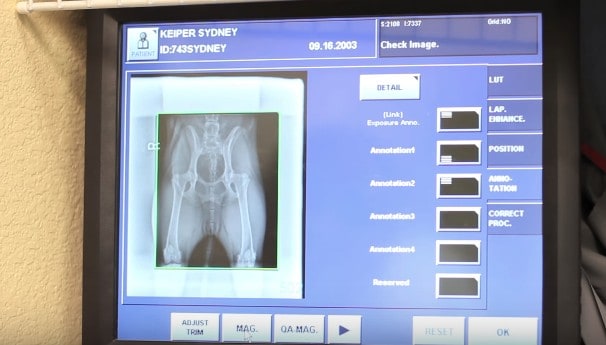Is your pet in need of a scan? Learning about the process and advantages of a digital x-ray is vital to the clear diagnosis and treatment of your pet.
Why does my pet need a digital x-ray?
X-ray, also known as radiology, is a medical examination that assesses your pet’s bones and organs for problems, diseases, or illness. This procedure involves the use of x-rays and medical imaging which, when used together, captures internal images of your pet’s body.

These images allow a veterinarian to see what’s going on with your pet, and how to go about treating it. The procedure is usually prescribed by the doctor when there are symptoms of the following in your furry friends: fractures, bone breakage, stomach bloating, internal organ complications, tumors, cysts, or dental problems.
A digital x-ray, as opposed to traditional film radiology, uses state of the art technology also used in human medicine. This ensures a much faster and reliable result that’s also more comfortable for your pets.
Benefits of digital x-ray
Below are the advantages of having your pets undergo a digital x-ray.
- Image capture of pet’s bones and organs in just seconds
- Produces high image quality
- Instant access to results
- Minimizes radiation exposure
- More comfortable experience for the pet
- Reduces need to control pet to stay still for long periods of time
- Can be manipulated to better see the results
- Image can be zoomed in for a more close-up evaluation
- Clarity of image can be adjusted
- Manipulation of image contrast to isolate bones and body parts
- Image can be inverted for comparative viewing
- Results can be emailed to radiologist, downloaded or saved into a CD
- Same technology used in human x-ray
Does my pet need anesthesia for an x-ray?
As long as a digital x-ray is being used, having your pet undergo anesthesia or sedation may be required if hip or shoulder x-rays are needed. If your pet happens to be extremely uncomfortable or is demonstrating signs of pain due to the process, then anesthesia, or sedation, might be recommended for your pet.
Unlike film x-rays, digital radiology uses advanced technology that only requires your pet to stay comfortably still for a couple of seconds at a time.
However, in some cases with traditional film x-ray, this isn’t always the case. If your pet happens to be extremely uncomfortable or is demonstrating signs of pain due to the process, then anesthesia, or sedation, might be recommended your pet.
Will a pet x-ray provide a clear diagnosis?
An x-ray alone will not provide a clear diagnosis of the problem, but it often sets the path for diagnosing the issues that are happening in your pet. More often than not, an x-ray will confirm something specific, allowing our vets to outline the next steps that are needed.
For example, finding a tumor on your pet through x-ray might require you to take a biopsy to test for malignancy. The same goes for finding kidney stones or other issues in the stomach that might require you to take an ultrasound in your dog or cat.
As a pet parent, it’s important to be prepared to have your pet undergo a series of tests in order to find out the underlying problem. While some are fortunate to have their complication figured out with just an x-ray, it isn’t always guaranteed.
Can a pet x-ray show pregnancy?
Yes, an x-ray can show whether your pet is pregnant or not after 42 hours fetus should show calcification to identify a fetus.
If you wish to subject your pet to an x-ray for this reason, make sure that your pet’s stomach and colon are empty for the most accurate results.
However, while this procedure may tell the size and number of babies, you won’t be able to tell how many are alive or not.
